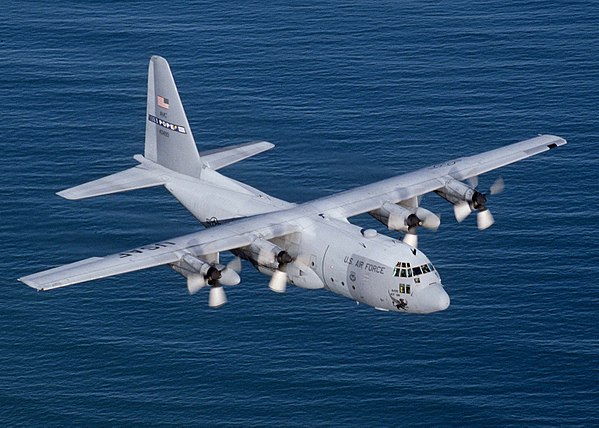STATE COLLEGE — Graystone Manor in Bellefonte is directly in the path of planes coming to University Park Airport.
The residents are used to hearing certain flights at regular times of day, and sometimes planes seem low and closer to the nine-story building, but when military planes are seen overhead, it sparks questions: Where are they coming from? Why are they flying here? Is something going on? I love a mystery and I determined to find the source of these planes.
Bryan Rodgers, director of University Park Airport and Penn State Aviation Center, talked about the planes.
“I recently had a call from a Bellefonte resident concerned about low-flying military aircraft, and your story could be helpful to explain the military aircraft operations,” Rodgers said.
I was able to gain some insight through internet searches and David Dimmick supplied a picture taken at Graystone of what he identified as a C-130 Hercules.
Dimmick is a resident of Graystone.
“When I was part of the 112th Tactical Air Squadron, based at University Park, we would ‘control’ all kinds of aircraft (including fighters and bombers), even simulating intercepts of enemy aircraft and bombing missions.” He said they used a restricted airspace that was 200 miles long by 75 miles wide by 2,000 feet deep, at 18,000 to 20,000 altitude.
So, that added information, but I needed confirmation about the origin of the flights.
The next call took me to the Youngstown, Ohio, Air Reserve Station, 910th Airlift Wing. Eric White, spokesperson for the 910th Airlift Wing, was willing to talk with me and supply some facts.
“The C-130 Hercules is easily identified by its four propellers on the wings,” White said. “The missions are random from here, depending on the type. Often it involves dropping palletized cargo and then coming back and picking it up again. Youngstown is ideal, with open airspace, as is University Park, State College. It’s just too much at the larger, busier airports.”
The C-130H aircraft was originally designed to transport cargo and troops in the combat zone using airdrops or unprepared runways for takeoffs and landings. The plane’s versatile airframe made it useful in a variety of other roles, such as search and rescue, airborne assault, weather reconnaissance, aerial firefighting and aerial refueling. The aircraft has been referred to as the “workhorse” of the Air Force combat airlift fleet.
The Air Force issued its original design specification in 1951, and 219 of the planes were ordered. Deliveries began in 1956. The latest upgrade or variation is the C-130J, which is longer with a 15-foot fuselage extension and a six-bladed propeller coupled to a Rolls-Royce AE2100D3 turboprop engine, (four of those) which results in performance improvements. The C-130J flies farther at higher cruise speeds, takes off/lands in a shorter distance, and climbs higher/faster.
“It is in the works to add this version there, but plans for the addition have not been finalized,” White said.
The crew of a Hercules consists usually of three — two pilots and a loadmaster. With a medical evacuation role, the crew would need to include two flight nurses and three medical technicians as well as the pilots.
When you hear the roar and see a large four-propellered plane overhead — it is our United States Air Force training and working for us.




